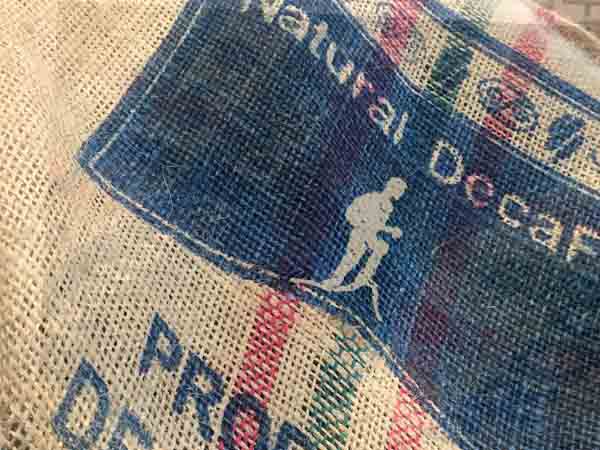There are many coffee drinkers who scoff at the idea of decaffeinated coffee. As a coffee roaster I sympathize with the decaf coffee drinker and have found enjoyment in the challenge of roasting the best decaf coffee possible.
When roasting, it’s important to understand that there are many components in coffee that will be lost in the cup as a result of the decaffeination process, regardless of what you do. For this reason, I generally prefer medium-dark to French roasts, thus highlighting the roast characteristics over those of the bean itself. Assuming you have selected good beans and applied the optimal roast, the actual process by which the coffee has been decaffeinated is a key factor the lays in the balance between an impressive cup or a painfully flat and lifeless cup.
There are many processes by which coffee is decaffeinated, many of them are misunderstood as a result of false information and misinterpreted science. The following is an overview of the five most common processes;
Swiss Water Process-
In this process the un-roasted beans soak in hot water in an effort to draw the caffeine out of the coffee. Once the beans have been soaked according to the proper duration, a solvent is developed which contains caffeine as well as other important flavor and aroma compounds. This solvent is further refined through a bed of activated charcoal filters in an effort to remove the caffeine exclusively. The water containing the remaining flavor components is then returned back to the coffee beans. In the past this process has been my least favorite as it rarely produced a decent coffee. Fortunately, this process has advanced remarkably, moving it from the bottom of our list to one of our top favorites.
CO2 Process-
In the carbon dioxide decaffeination process, green coffee beans are soaked in highly compressed CO2, which extracts the caffeine. The caffeine is then removed from the CO2 using activated carbon filters, which are then reused to extract caffeine from the coffee again. I have become very fond of this process largely because it produces a good clean cup without exposing the green coffee to hot water. Decaffeinated coffees have traditionally been processed either in Germany or in a select few coffee producing countries. Carbon dioxide decaf coffee is processed here in the United States by a company based in Houston, Texas.
Sparkling Water Process-
The sparkling water decaffeination process is similar to the CO2 method, however, instead of removing the caffeine with activated carbon filters, the caffeine is washed from the CO2 with sparkling water in a secondary tank, which is then recycled to extract more caffeine from the coffee. The solvent consists of approximately 99.7% compressed carbon dioxide and 0.3% water.
EA (Ethyl Acetate) Process-
This is one of my favorite methods and is ironically one of the least known. In this "direct method", the coffee beans are first steamed for 30 minutes and then repeatedly rinsed for 10 hours with ethyl acetate, which absorbs caffeine. The solvent is then drained away and the beans are steamed for an additional 10 hours to remove residual solvent. The EA process is commonly referred to as a natural process due to the fact that ethyl acetate is an alcohol derived from fruit pulp or sugar cane. It’s always tricky titling this process because Ethyl Acetate sounds like some sort of scary synthetic chemistry concoction, but the truth is it’s essentially a vinegar. I had the pleasure of visiting with Sven Dabelstein, CEO of DESCAFECOL and taking a fascinating tour of their facility in Colombia. The facility was impeccably clean and impressively engineered. EA Colombians are my favorite process, and I especially love the fact that the coffee doesn’t have to get shipped all the way to Germany to be processed; rather, it’s done within miles of many of the coffee farms in Manizales, Colombia.

Apologies up front for the quality of the photo, the metallic material made this a difficult diagram to shoot; however, it's still interesting to see all of the various different vats and containers that the coffee moves in and out of during the process of decaffeination.
Methylene Chloride (Chemical) Process-
In this process the beans are treated with steam in order to draw caffeine from the core of the bean to the surface. Once this has been accomplished, methylene chloride is applied directly to the beans, which removes the caffeine. Steam again is applied to the coffee, which drives out residual solvent.
This process usually results in the best tasting decaf, however, it has suffered the worst reputation. Although one could argue that the negative reputation is unmerited due to the fact that burn rate for Methyline Chloride in under 200 degrees and coffee is roasted in excess of 400 degrees; but, the hesitancy is understandable when it comes to drinking anything that is associated with words like "methylene", "chloride" and "chemical". The argument that there is no harm whatsoever in this process, rests on a few key points:
-The United States Food and Drug Administration (FDA) has authorized by regulation the use of both methylene chloride for coffee decaffeination, According to an FDA report in the Federal Register, most decaffeinated coffee has less than 0.1 parts per million (ppm) of residual methylene chloride, 100 times less than The maximum level of 10 ppm allowed by the FDA.
-Methylene chloride is a colorless liquid with a slightly sweet aroma and has a boiling point of 104 degrees (Fahrenheit). Coffee is roasted well above 400 degrees and then brewed at temperatures exceeding 190 degrees.
Caffeine Content in Coffee-
Almost all brands of decaffeinated coffee still contain a minimum amount of caffeine. Drinking five to ten cups of decaffeinated coffee could deliver as much caffeine as would one or two cups of regular coffee, according to research at the University of Florida Naples Center for Forensic Medicine. In one independent study of 10 popular decaffeinated coffees, researchers found that all but one contained detectable caffeine. The 16-ounce (473-milliliter) cups of coffee samples contained caffeine in the range of 8.6 milligrams to 13.9 milligrams. In another similar study of popular brands of decaf coffees, the caffeine content was anywhere from 3 milligrams up to 32 milligrams. Both of these studies tested the caffeine content of store-brewed coffee, suggesting the caffeine may be residual from the normal coffee served, rather than poorly decaffeinated coffee.

These are the gentlemen we met at the EA facility. There are currently only two facilities in the world that use and EA process like this, one in Mexico and this one in Colombia. Apparently the Mexican company uses Chinese molasses in the process, the Colombians keep it all local.

